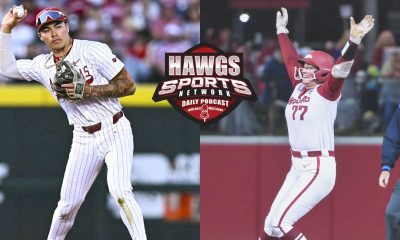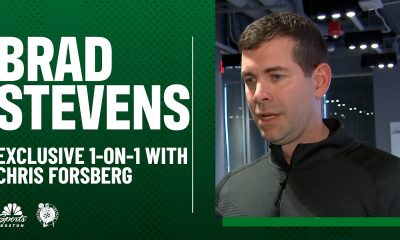NIL
United High School Athletic Director Jeremy Sharp
Notice of Non-Discrimination Prairie Media Communications is committed to the principles of equal opportunity and strictly prohibits discrimination against any person on the basis of age, ancestry, citizenship status, color, creed, ethnicity, gender identity and expression, genetic information, marital status, mental or physical disability, national origin, race, religious affiliation, sex, sexual orientation, or veteran status […]
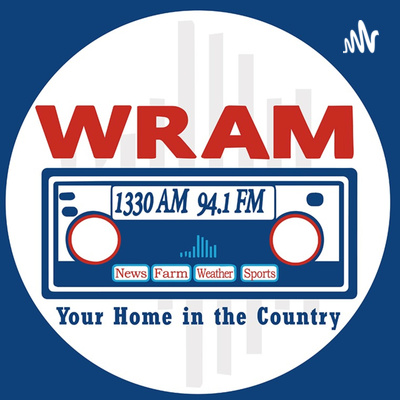


Notice of Non-Discrimination
Prairie Media Communications is committed to the principles of equal opportunity and strictly prohibits discrimination against any person on the basis of age, ancestry, citizenship status, color, creed, ethnicity, gender identity and expression, genetic information, marital status, mental or physical disability, national origin, race, religious affiliation, sex, sexual orientation, or veteran status in its activities, admissions, educational programs, and employment.
NIL
College basketball rankings: Florida lands Arkansas’ Boogie Fland, makes big jump in updated Top 25 And 1
1 Houston This ranking is based on the Cougars returning three of the top seven scorers — specifically Emanuel Sharp, Milos Uzan and Joseph Tugler — from a team that finished 35-5 and advanced to the championship game of the 2025 NCAA Tournament. That core will be joined by a recruiting class highlighted by Creighton […]
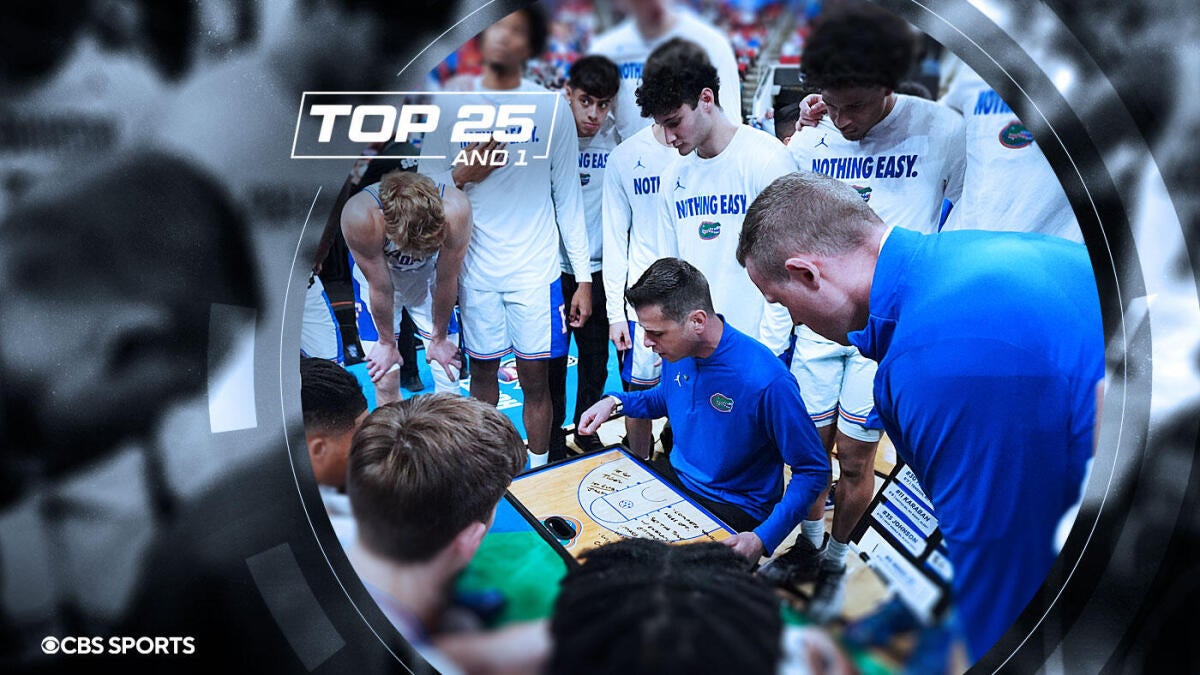
1

Houston
This ranking is based on the Cougars returning three of the top seven scorers — specifically Emanuel Sharp, Milos Uzan and Joseph Tugler — from a team that finished 35-5 and advanced to the championship game of the 2025 NCAA Tournament. That core will be joined by a recruiting class highlighted by Creighton transfer Pop Isaacs, Sam Houston transfer Kalifa Sakho, five-star freshman Chris Cenac Jr. and four-star freshmen Isiah Harwell and Kingston Flemings.
2

St. John’s
This ranking is based on the Red Storm returning one of the top two scorers — specifically Zuby Ejiofor — from a team that finished 31-5 and advanced to the second round of the 2025 NCAA Tournament. That core will be joined by a recruiting class highlighted by North Carolina transfer Ian Jackson, Providence transfer Bryce Hopkins, Arizona State transfer Joson Sanon, Cincinnati transfer Dillon Mitchell, Stanford transfer Oziyah Sellers, Idaho State transfer Dylan Darling, NAIA transfer Handje Tamba, international prospect Imran Suljanovic and four-star freshman Kelvin Odih.
3

BYU
This ranking is based on the Cougars returning four of the top 10 scorers — specifically Richie Saunders, Dawson Baker, Keba Keita and Mihailo Boskovic — from a team that finished 26-10 and advanced to the Sweet 16 of the 2025 NCAA Tournament. That core will be joined by a recruiting class highlighted by Baylor transfer Robert Wright, Southern Illinois transfer Kennard Davis, UC Riverside transfer Nate Pickens, Washington transfer Dominique Diomande, Idaho transfer Tyler Mrus, five-star freshman AJ Dybantsa and four-star freshman Xavion Staton.
4

Purdue
This ranking is based on the Boilermakers returning five of the top six scorers – specifically Trey Kaufman-Renn, Braden Smith, Fletcher Loyer, Daniel Jacobsen and C.J. Cox – from a team that finished 24-12 and advanced to the Sweet 16 of the 2025 NCAA Tournament. That core will be joined by a recruiting class highlighted by South Dakota State transfer Oscar Cluff, North Florida transfer Liam Murphy and international prospect Omer Mayer.
—
24-12
5

UConn
This ranking is based on the Huskies returning four of the top seven scorers — specifically Solo Ball, Alex Karaban, Tarris Reed and Jaylin Stewart — from a team that finished 24-11 and advanced to the second round of the 2025 NCAA Tournament. That core will be joined by a recruiting class highlighted by Georgia transfer Silas Demary Jr., Dayton transfer Malachi Smith, five-star freshman Braylon Mullins, four-star freshman Eric Reibe and three-star freshman Jacob Ross.
6

Florida
This ranking is based on the Gators returning five of the top 10 scorers – specifically Alex Condon, Thomas Haugh, Rueben Chinyelu, Urban Klavzar and Micah Handlogten – from a team that finished 36-4 and won the 2025 NCAA Tournament. That core will be joined by a recruiting class highlighted by Princeton transfer Xaivian Lee, Arkansas transfer Boogie Fland and four-star freshmen CJ Ingram and Alex Lloyd.
7

Texas Tech
This ranking is based on the Red Raiders returning two of the top four scorers — specifically JT Toppin and Christian Anderson — from a team that finished 28-9 and advanced to the Elite Eight of the 2025 NCAA Tournament. That core will be joined by Washington State transfer LeJuan Watts, UNC Greensboro transfer Donovan Atwell, Villanova transfer Josiah Moseley, VCU transfer Luke Bamgboye and redshirt freshmen Marial Akuentok.
1
28-9
8

Michigan
This ranking is based on the Wolverines returning three of the top eight scorers — specifically Roddy Gayle Jr., Nimari Burnett and L.J. Cason — from a team that finished 27-10 and advanced to the Sweet 16 of the 2025 NCAA Tournament. That core will be joined by a recruiting class highlighted by UAB transfer Yaxel Lendeborg, Illinois transfer Morez Johnson Jr., North Carolina transfer Elliot Cadeau, UCLA transfer Aday Mara and four-star freshmen Trey McKenney and Winters Grady.
1
27-10
9

Duke
This ranking is based on the Blue Devils returning three of the top nine scorers — specifically Isaiah Evans, Caleb Foster and Patrick Ngongba — from a team that finished 35-4 and advanced to the Final Four of the 2025 NCAA Tournament. That core will be joined by a recruiting class highlighted by Washington State transfer Cedric Coward, Rice transfer Ifeanyi Ufochukwu, five-star freshman Cameron Boozer, and four-star freshmen Nikolas Khamenia and Cayden Boozer.
1
35-4
10

UCLA
This ranking is based on the Bruins returning three of the top four scorers – specifically Tyler Bilodeau, Eric Dailey Jr. and Skyy Clark – from a team that finished 23-11 and advanced to the second round of the 2025 NCAA Tournament. That core will be joined by a recruiting class featuring New Mexico transfer Donovan Dent, Michigan State transfer Xavier Booker, Kansas City transfer Jamar Brown, San Diego transfer Steven Jamerson and North Carolina Central transfer Anthony Peoples Jr.
11

Arizona
This ranking is based on the Wildcats returning four of the top eight scorers — specifically Jaden Bradley, Tobe Awaka, Motiejus Krivas and Anthony Dell’Orso — from a team that finished 24-13 and advanced to the Sweet 16 of the 2025 NCAA Tournament. That core will be joined by a recruiting class highlighted by Harvard transfer Evan Nelson, five-star freshmen Koa Peat and Brayden Burries, and four-star freshman Dwayne Aristode.
1
24-13
12

Kentucky
This ranking is based on the Wildcats returning two of the top seven scorers — specifically Otega Oweh and Brandon Garrison — from a team that finished 24-12 and advanced to the Sweet 16 of the 2025 NCAA Tournament. That core will be joined by a recruiting class highlighted by Arizona State transfer Jayden Quaintance, Alabama transfer Mouhamed Dioubate, Pitt transfer Jaland Lowe, Tulane transfer Kam Williams, Florida transfer Denzel Aberdeen, Miami (Ohio) transfer Reece Potter and four-star freshmen Jasper Johnson and Malachi Moreno.
1
24-12
13

Iowa St.
This ranking is based on the Cyclones returning three of the top five scorers — specifically Joshua Jefferson, Milan Momcilovic and Tamin Lipsey — from a team that finished 25-10 and advanced to the second round of the 2025 NCAA Tournament. That core will be joined by a recruiting class highlighted by Virginia transfer Blake Buchanan, Purdue Fort Wayne transfer Eric Mulder, Eastern Washington transfer Mason Williams, Utah Valley transfer Dominick Nelson and four-star freshman Jamarion Batemon.
1
25-10
14

Louisville
This ranking is based on the Cardinals returning two of the top five scorers – specifically J’Vonne Hadley and Kasean Pryor – from a team that finished 27-8 and advanced to the first round of the 2025 NCAA Tournament. That core will be joined by a recruiting class highlighted by Virginia transfer Isaac McKneely, Xavier transfer Ryan Conwell, Kennesaw State transfer Adrian Wooley, five-star freshman Mikel Brown and four-star freshman Sananda Fru.
1
27-8
15

Michigan St.
This ranking is based on the Spartans returning four of the top eight scorers — specifically Coen Carr, Jaxon Kohler, Jeremy Fears and Carson Cooper — from a team that finished 30-7 and advanced to the Elite Eight of the 2025 NCAA Tournament. That core will be joined by a recruiting class highlighted by Samford transfer Trey Fort, FAU transfer Kaleb Glenn, Miami transfer Divine Ugochukwu and four-star freshmen Cam Ward and Jordan Scott.
16

Oregon
This ranking is based on the Ducks returning four of the top 10 scorers – specifically Nate Bittle, Jackson Shelstad, Kwame Evans Jr. and Jamari Phillips – from a team that finished 25-10 and advanced to the second round of the 2025 NCAA Tournament. That core will be joined by a recruiting class highlighted by Ohio State transfer Sean Stewart, Elon transfer TK Simpkins and three-star freshman JJ Frakes.
—
25-10
17

Kansas
This ranking is based on the Jayhawks returning one of the top seven scorers – specifically Flory Bidunga – from a team that finished 21-13 and advanced to the first round of the 2025 NCAA Tournament. That core will be joined by a recruiting class highlighted by Illinois transfer Tre White, Loyola Chicago transfer Jayden Dawson, St. Bonaventure transfer Melvin Council, five-star freshman Darryn Peterson, four-star freshman Samis Calderon and three-star freshman Corbin Allen – plus Elmarko Jackson, a former five-star prospect who missed this past season with a knee injury.
—
21-13
18

Auburn
This ranking is based on the Tigers returning one of the top three scorers — specifically Tahaad Pettiford — from a team that finished 32-6 and advanced to the Final Four of the 2025 NCAA Tournament. That core will be joined by a recruiting class highlighted by UCF transfer Keyshawn Hall, Mississippi State transfer KeShawn Murphy, Texas Tech transfer Kevin Overton, Lincoln Memorial transfer Elyjah Freeman, JUCO transfer Abdul Bashir and four-star freshmen Sebastian Williams-Adams and Kaden Magwood.
19

Arkansas
This ranking is based on the Razorbacks returning four of the top nine scorers – specifically DJ Wagner, Karter Knox, Trevon Brazile and Billy Richmond III – from a team that finished 22-14 and advanced to the Sweet 16 of the 2025 NCAA Tournament. That core will be joined by a recruiting class highlighted by Florida State transfer Malique Ewin, South Carolina transfer Nick Pringle, five-star freshmen Darius Acuff Jr. and Meleek Thomas.
—
22-14
20

Tennessee
This ranking is based on the Vols returning three of the top eight scorers — specifically Felix Okpara, J.P. Estrella and Cade Phillips — from a team that finished 30-8 and advanced to the Elite Eight of the 2025 NCAA Tournament. That core will be joined by a recruiting class highlighted by Vanderbilt transfer Jaylen Carey, Maryland transfer Ja’Kobi Gillespie, Louisiana Tech transfer Amaree Abram, five-star freshman Nate Ament and four-star freshmen Amari Evans and DeWayne Brown.
21

Gonzaga
This ranking is based on the Zags returning four of the top 10 scorers — specifically Graham Ike, Braden Huff, Ismaila Diagne and Emmanuel Innocenti — from a team that finished 26-9 and advanced to the second round of the 2025 NCAA Tournament. That core will be joined by a recruiting class highlighted by Virginia transfer Jalen Warley, Arizona State transfer Adam Miller, Colgate transfer Braeden Smith, four-star freshman Davis Fogle and three-star freshman Parker Jefferson — plus the return of Steele Venters, who has missed the past two seasons with injuries.
22

Texas
This ranking is based on the Longhorns returning three of the top six scorers — specifically Jordan Pope, Tramon Mark and Chendall Weaver — from a team that finished 19-16 and advanced to the first round of the 2025 NCAA Tournament. That core will be joined by a recruiting class highlighted by Xavier transfer Lassina Traore, FAU transfer Matas Vokietaitis, Purdue transfer Camden Heide, St. John’s transfer Simeon Wilcher, Xavier transfer Dailyn Swain and four-star freshman John Clark.
—
19-16
23

Illinois
This ranking is based on the Illini returning two of the top four scorers – specifically Tomislav Ivisic and Kylan Boswell – from a team that finished 22-13 and advanced to the second round of the 2025 NCAA Tournament. That core will be joined by a recruiting class highlighted by Cal transfer Andrej Stojakovic, Arkansas transfer Zvonimir Ivisic, international prospects David Morkovic and Mihailo Petrovic, and four-star prospects Brandon Lee and Keaton Wagler – plus the return of Ty Rodgers, who missed this past season with an injury.
—
22-13
24

Alabama
This ranking is based on the Crimson Tide returning two of the top four scorers – specifically Latrell Wrightsell Jr. and Aden Hollowayl – from a team that finished 28-9 and advanced to the Elite Eight of the 2025 NCAA Tournament. That core will be joined by a recruiting class highlighted by Miami transferJalil Bethea, Florida State transfer Tayor Bol Bowen, Bucknell transfer Noah Williamson, Tarleton State transfer Keiteen Bristow and four-star freshmen London Jemison, Davion Hannah and Amari Allen.
25

Wisconsin
This ranking is based on the Badgers returning three of the top nine scorers – specifically John Blackwell, Nolan Winter and Jack Janicki – from a team that finished 27-10 and advanced to the second round of the 2025 NCAA Tournament. That core will be joined by a recruiting class highlighted by San Diego State transfer Nick Boyd, Virginia transfer Andrew Rohde, Portland transfer Austin Rapp, Tulsa transfer Braeden Carrington, International prospect Aleksas Bieliauskas and four-star freshman Zach Kinziger.
26

Ohio St.
This ranking is based on the Buckeyes returning three of the top four scorers — specifically Bruce Thornton, Devin Royal and John Mobley Jr. — from a team that finished 17-15 and missed the 2025 NCAA Tournament. That core will be joined by Wright State transfer Brandon Noel, Santa Clara transfer Christoph Tilly, Indiana transfer Gabe Cupps and four-star freshmen A’mare Bynum and Dorian Jones.
—
17-15
NIL
FIBA Sends Shot Across Bow On College Access To International Basketball Players
BLOOMINGTON, Ind. – One of the most prominent Indiana University athletes over the last three seasons was women’s basketball player Yarden Garzon. A native of Israel, Garzon developed as a younger player as most players do who come from the European zone of competition (which Israel participates in) – she played with her Israeli professional […]

BLOOMINGTON, Ind. – One of the most prominent Indiana University athletes over the last three seasons was women’s basketball player Yarden Garzon.
A native of Israel, Garzon developed as a younger player as most players do who come from the European zone of competition (which Israel participates in) – she played with her Israeli professional team. In Garzon’s case, it was Maccabi Ironi Ramat Gan.
Overseas, there is little-to-no separation of professional and amateur standing as we know it here. Garzon played as a professional before she came to Indiana from 2022-25. She has since transferred to Maryland.
Indiana did not have to pay Maccabi Ironi Ramat Gan any money to release Garzon to play for the Hoosiers – and FIBA secretary general Andreas Zagklis wants to change that. FIBA, translated as the International Basketball Federation, governs the sport around the globe.
During FIBA’s Mid-Term Congress in Bahrain last weekend, Zagklis noted that NCAA schools are getting away with procuring talent without having to pay for it. That runs counter to the way the international basketball system typically works.
“The colleges in the NCAA are getting closer every day to being commercial entities or professional clubs,” Zagklis said in a speech to the Congress. “That’s challenging our ecosystem for the simple reason that our ecosystem is based on one principle — you can transfer as long as contracts are respected. Agreements must be respected.”
Zagklis was noting that in the United States college basketball players are compensated via name, image and likeness, and if approved, by the schools themselves if the House settlement is approved to govern college sports.
“In order to transfer from one professional basketball institution to another de facto professional basketball institution, there should be a process, call it a Letter of Clearance,” Zagklis continued.
“There must be clearance from the exiting club and national federation, and there needs to be some safeguards of where the player is going: what the conditions there will be, what will be the availability for the national team, and what is the recompense for the FIBA ecosystem, our clubs, our leagues, our federations and their members that have invested for someone who started playing at the age of 9, 10, or 11 and now ends up with a 7-figure check in the hands at the age of 18,” Zagklis said.
Zagklis said FIBA will formally engage the NCAA about this process.
“It won’t be easy, because this is an environment that still hasn’t decided for itself how it will regulate itself,” Zagklis said.
The way international clubs and organizations usually make this work is via a transfer fee. They are most commonly known in soccer, but are used in other sports, too.
Transfer fees are largely unknown in American sports, though baseball teams occasionally have paid them to Japanese teams to get highly coveted players. They are typically called posting fees, but the principle is the same. NBA teams have also paid transfer fees for access to international talent.
With a transfer fee, the team that wants the player pays the club that has rights to them. That fee is independent of the salary paid to the player.
Soccer transfer fees are astronomical, very often into nine figures for the best talent. Basketball transfer fees are often much lower but not insignificant.
However, given the demand for international women’s players, their clubs would almost certainly set high fees for American colleges interested in talent they developed.
Using Garzon as an example, even what may seem like a modest fee in the international marketplace would not be insignificant for a college athletic department. If Indiana had to pay $50,000-$200,000 to get access to Garzon, would it have bothered?
This potential transfer fee would affect both men’s and women’s basketball. In the immediate environment and in the recent past, Indiana’s women’s basketball team has had more international players than the men’s team.
Only one player currently on the women’s basketball roster, Valentyna Kadlecova, has come to Indiana directly from a European club team.
However, transfers Edessa Noyan and Phoenix Stotijn did play for club teams in Sweden and the Netherlands, respectively, before they came to the United States to play college basketball. Virginia (Noyan) and Arkansas (Stotijn) would have had to pay transfer fees to gain access to those players.
Under FIBA’s proposal, it is possible Indiana would have had to pay a fee to their clubs too, depending on how their agreement to come over to the United States were structured. There is no international equivalent to the transfer portal, so it’s unknown how that might factor into transfer fees.
What is clear is that the international organizing body wants NCAA teams to pony up to have access to international players. That will present a challenge for basketball teams that like to rely on international talent – much as Indiana women’s basketball team has done.
NIL
5 NFL changes that college football needs to adopt
College football has been slowly morphing into something that looks more and more like the NFL, and not always in a good way. We’ve seen players sit out bowl games or even enter holdout-like situations over NIL deals and promises. Negotiations between athletes and schools are now routine. The chaos of the transfer portal often […]

College football has been slowly morphing into something that looks more and more like the NFL, and not always in a good way.
We’ve seen players sit out bowl games or even enter holdout-like situations over NIL deals and promises. Negotiations between athletes and schools are now routine. The chaos of the transfer portal often feels like free agency gone wild.
But if college football is going to adopt the ugly parts of the NFL, why not take a few of the good ones too? There are some practical, even game-enhancing, changes that the NFL has figured out—rules and structures that college football could desperately use right now. From playoff format changes to tech upgrades and centralized leadership, here are five NFL-style ideas that college football should absolutely consider adopting.
1. Only Champions Are Guaranteed a Playoff Spot
Let’s be real—college football’s postseason is headed for chaos without a clearer structure. While more playoff expansion sounds nice, it’s far too much for the SEC and Big Ten to get in based on popularity or perception, rather than on-field results. The same can be said with giving the ACC or Big 12 automatic bids.
In the NFL, the rule is simple: if you win your division, you’re in. College football could do something similar by reinstating divisions within each conference and guaranteeing spots to each division champion—or just to the overall conference champion. From there, the rest of the playoff field could be selected based on standings and rankings, not brand name.
It would force teams to win when it matters, place real value on conference championships again, and remove some of the ambiguity that fans—and coaches—are already frustrated by.
2. Summer OTAs for Team Development
Organized Team Activities (OTAs) are a core part of NFL preparation. They’re voluntary in name, but essential in reality. College football has spring practice, but it’s inconsistent across the board and often more about evaluation than development.
What if the NCAA or the future college football commissioner (more on that in a second) put in place regulated OTAs during the offseason? Not just a few practices in April, but multiple structured phases throughout the offseason—giving teams and players a safe, consistent schedule to develop chemistry, install schemes, and build depth, if they so choose.
It could go a long way in improving player readiness, especially for freshmen or transfers who are expected to contribute immediately.
3. Laser Markers for First Downs
This one’s a no-brainer. The NFL is finally getting with the times this season and introducing laser systems to mark the first down line. That means no more chains dragged out by officials. No more guessing whether the ball “nicked” the stick.
College football is still out here using 10-yard chains and eyeballs in an era where the spot of the football can literally change the outcome of a game—or a season.
It’s time for college football to modernize with this technology. The laser systems are more accurate, faster, and eliminate those agonizing delays while the officials try to figure out where to place the ball. In a world full of slow reviews and sketchy spots, this one upgrade could immediately improve the game.
4. A Real Commissioner With Actual Power
Right now, college football is like a town with six different mayors who refuse to talk to each other, or only use one another to push their own narrative. The SEC does its thing, the Big Ten has its own agenda, and the ACC and Big 12 are just trying to survive. Every conference has its own media rights, its own rules, and its own motivations.
That doesn’t fly in the NFL. Roger Goodell may not be perfect, but the league has one commissioner who enforces rules, manages revenue distribution, negotiates media rights, and makes decisions that benefit the league as a whole.
College football desperately needs someone in that role—someone who could unify the sport, centralize TV deals into one bidding package like the NFL does, and put the good of the game ahead of individual conference power grabs.
With the expanded Playoff, NIL chaos, and conference realignment spinning out of control, this may be the single most important change the sport needs.
5. Fix the Pass-Interference Rule
On a little smaller scale, it’s time to adjust the pass-interference rule. In the NCAA, all defensive pass interference penalties are 15 yards. In the NFL, it’s a spot foul—meaning if you interfere 40 yards downfield, that’s where the offense gets the ball.
It might seem like a small tweak, but this rule leads to constant underthrows, arm-grabbing, and deliberate DPI penalties on college defenses. Corners have little incentive to play the ball deep downfield when taking a 15-yard penalty is often better than giving up a 50-yard bomb.
If college football really wants to clean up deep passing and reward skill over sloppy defense, it needs to move to the NFL’s spot foul rule. It would eliminate the “just tackle the receiver” strategy and make the game more exciting for fans.
Read More
NIL
Nick Saban rejects notion he’s anti-NIL ahead of presidential commission on college sports
There’s been plenty of news around a potential presidential commission to investigate and solve some issues in college athletics. Nick Saban isn’t sure such a commission is needed. He does, however, want to make it clear that he’s willing to lend his support to any party looking to create those solutions. And, moreover, he reiterated […]
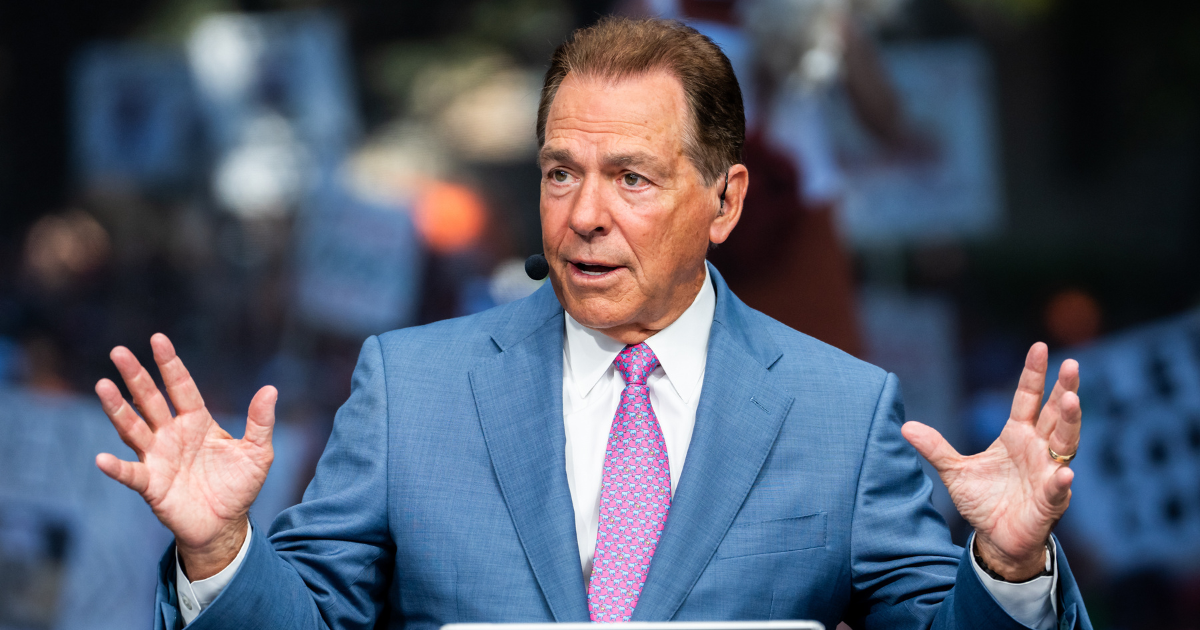
There’s been plenty of news around a potential presidential commission to investigate and solve some issues in college athletics. Nick Saban isn’t sure such a commission is needed.
He does, however, want to make it clear that he’s willing to lend his support to any party looking to create those solutions. And, moreover, he reiterated he’s not against NIL in general, though it is one of the issues the sport is grappling with.
“I’m not anti-NIL. I’m all for the players making money,” Nick Saban said at a charity event. “I don’t think we have a sustainable system right now. I think a lot of people would agree with that. In terms of the future of college athletics period, not just football, how do we sustain 20 other non-revenue sports that create lots of other opportunities for people in the future?”
Those are the questions the long-time college football coach is willing to lend his support on. It just may not happen in the way it was initially reported.
“I know there’s been a lot of stuff out there about some commission or whatever,” Nick Saban said. “I don’t think we need a commission. I’ve said that before. I think we know what the issues are, we just have to have people that are willing to move those and solve those, create some solutions for some of those issues.”
Again, he’s willing to help. However things shake out, whether it’s a political body or the NCAA or conferences themselves, change appears to be coming in the sport.
Who better to tap into for advice than Nick Saban? He knows quite a bit.
“I’m all for being a consultant to anybody who would think that my experience would be beneficial to help them create some of those solutions,” Nick Saban said. “President Trump is very interested in athletics, he’s very interested in college athletics. He’s very interested in maintaining the idea that people going to college create value for their future in terms of how they develop as people, as students, as well as having a balanced, competitive playing field.
“So if I can be a consultant to anyone to help with the future of college athletics I’d be more than happy to do that.”
NIL
Texas Tech forward Devan Cambridge commits to UCF out of NCAA transfer portal
Former Texas Tech, Arizona State and Auburn forward Devan Cambridge has committed to UCF out of the NCAA transfer portal, according to a report from CBS Sports’ Jon Rothstein. He did so after spending two seasons with the Red Raiders. Cambridge is a well-traveled player at this point, set to play for his fourth different […]
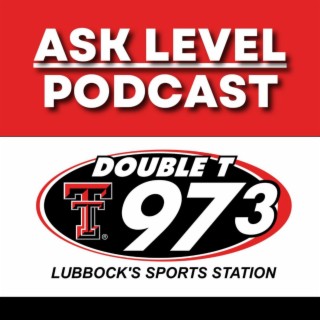
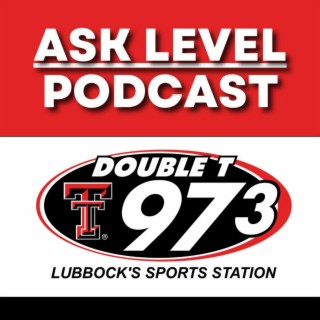
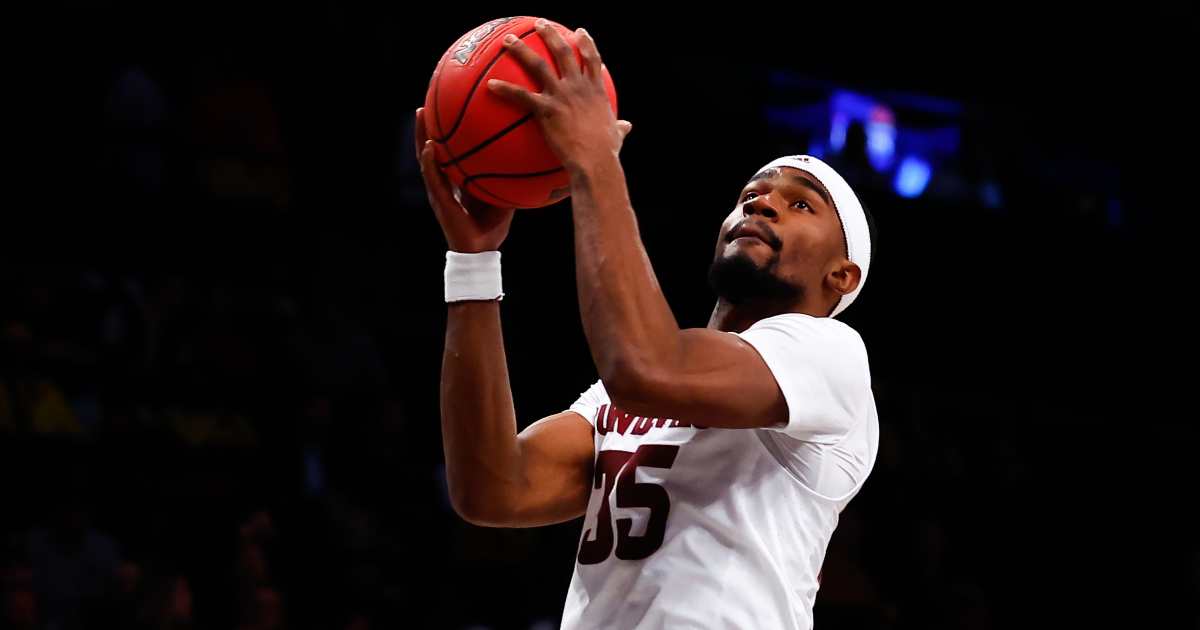
Former Texas Tech, Arizona State and Auburn forward Devan Cambridge has committed to UCF out of the NCAA transfer portal, according to a report from CBS Sports’ Jon Rothstein. He did so after spending two seasons with the Red Raiders.
Cambridge is a well-traveled player at this point, set to play for his fourth different school during the 2025-26 campaign. He has appeared in just 14 games in the last two years, with injuries taking a toll.
The 6-foot-6 prospect suffered a torn ACL during the 2023-24 season that greatly limited him over the next two years. He had averaged a career-best 10.5 points and 4.5 rebounds per game for Texas Tech before the injury.
The most consistent year of Devan Cambridge’s career came in 2022-23 at Arizona State, where he appeared in 36 games and started 35 of them. He averaged 9.8 points and 5.4 rebounds during that season, while also showing he could shoot from the perimeter.
Cambridge has a career 29.3% 3-point percentage, and he’s not afraid to shoot them. He has taken 410 career attempts from downtown.
All of those qualities will make him a solid pickup for UCF, at least in the event he can get and stay healthy. That will be a big key going forward.
In his career, across three programs — Devan Cambridge spent his first three seasons at Auburn — he has played in 141 games and started 78 of them. So he’s a player with considerable experience.
Prior to enrolling at Auburn, Devan Cambridge was rated as a three-star prospect and the No. 229 overall recruit in the country, according to the On3 Industry Rankings. He also checked in as the No. 53 small forward in the class and the No. 8 overall player in the state of Arizona, hailing from Phoenix (AZ) Hillcrest Prep.
NIL
FSU coach Mike Norvell is a proponent of NIL enforcement in proposed Salary Cap Era of …
Mike Norvell views the proposed salary cap and subsequent enforcement that is supposed to go into effect if and/or when the House Settlement passes as a “good thing” for college athletics. Florida State’s head coach views the idea of “checks and balances” in terms of regulating the spending on college athletes as a healthy endeavor […]


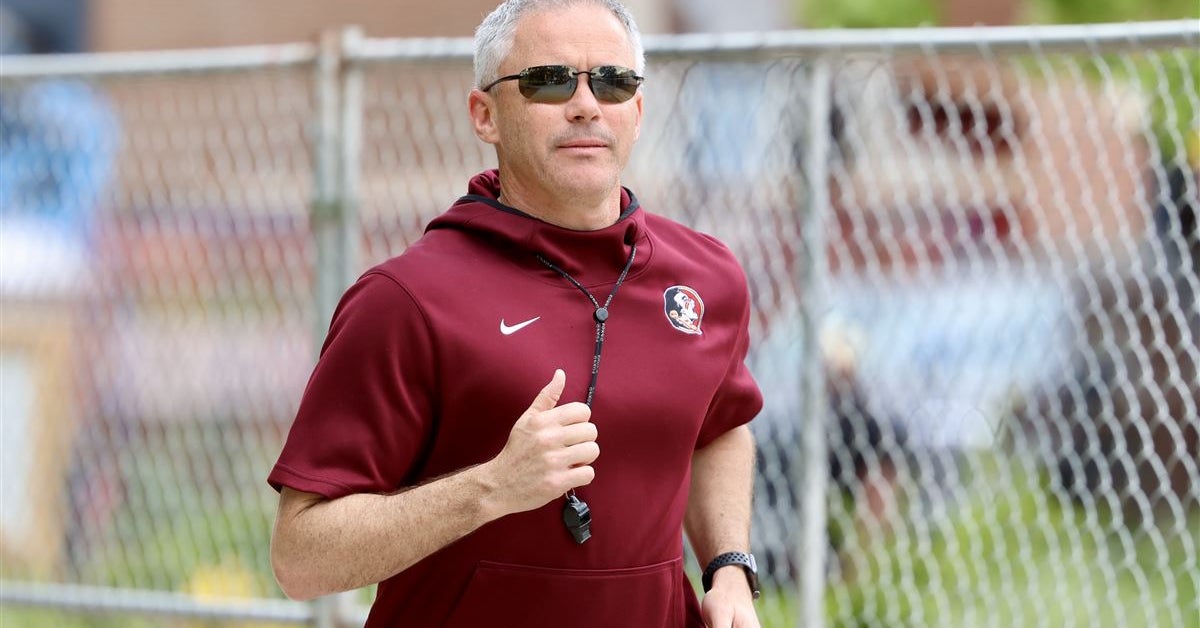
Mike Norvell views the proposed salary cap and subsequent enforcement that is supposed to go into effect if and/or when the House Settlement passes as a “good thing” for college athletics.
Florida State’s head coach views the idea of “checks and balances” in terms of regulating the spending on college athletes as a healthy endeavor as most major college programs seem to be in unison that extra compensation via NIL should be regulated if schools are going to exceed to $20.5 million to be spread around towards all sports.
“I say, checks and balances in a sense of what those deals are. And obviously guys have to go out there and earn whatever opportunities can be provided,” Norvell told the Tampa Bay Times and other outlets during a booster stop in Tampa over the weekend. “To be able to have a little bit of an understanding through Deloitte and what they can do, it’s going to be, I think it will still be up to each football, each athletic department to where they disperse those funds.
“I think it will bring everything to a more comparable situation based off the university. Just big picture within college athletics, I think it’ll be a good thing.”
Norvell’s reference to Deloitte is about a clearinghouse, with the major accounting firm being tasked with moderating how much Name, Image, Likeness deals should be worth and then enforcing said deals. Currently, NIL has largely been used as a way of compensating college athletes beyond of off-field value (although the intent of NIL was initially for solely off-field value).
How enforceable that is, remains to be seen. The House settlement is still being finalized, and it was reported on Monday that a CEO and new enforcement agency (beyond the NCAA) will be in place if the settlement is passed this week. The CEO of the College Sports Commission will be tasked with aspects like doling out punishments for rules violations and enforcing the salary cap.
Per a Yahoo report, the P4 programs that do not agree to be a member under the CSC would risk “the loss of conference membership and participation against other power league programs.” The state of Tennessee signed a bill earlier this month that would allow schools and their NIL collectives to “break House settlement-related rules” and “prevents college sports’ new enforcement entity from penalizing those schools” per a Yahoo report.
FSU athletic director Michael Alford has consistently voiced his understanding and support of a cap as well as NIL regulation with the House settlement presumably on the horizon. It appears that Alford and his head football coach are in unison on the matter in this ever-changing landscape of college football.
-

 Fashion2 weeks ago
Fashion2 weeks agoHow to watch Avalanche vs. Stars Game 7 FREE stream today
-

 High School Sports2 weeks ago
High School Sports2 weeks agoWeb exclusive
-

 Sports2 weeks ago
Sports2 weeks agoPrinceton University
-

 Sports2 weeks ago
Sports2 weeks ago2025 NCAA softball bracket: Women’s College World Series scores, schedule
-

 Motorsports2 weeks ago
Motorsports2 weeks agoBowman Gray is the site of NASCAR’S “Advance Auto Parts Night at the Races” this Saturday
-

 NIL2 weeks ago
NIL2 weeks ago2025 Big Ten Softball Tournament Bracket: Updated matchups, scores, schedule
-

 NIL2 weeks ago
NIL2 weeks agoPatty Gasso confirms Sophia Bordi will not finish season with Oklahoma softball
-

 Motorsports2 weeks ago
Motorsports2 weeks agoMOTORSPORTS: Three local track set to open this week | Sports
-

 Motorsports2 weeks ago
Motorsports2 weeks ago$1.5 Billion Legal Powerhouse Announces Multi-Year NASCAR Deal With Kyle Busch
-
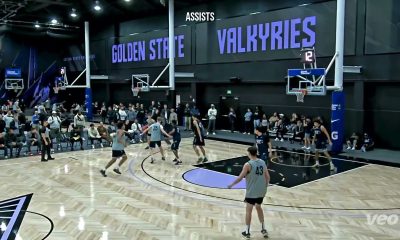
 High School Sports3 weeks ago
High School Sports3 weeks agoMaryland Basketball Recruiting












